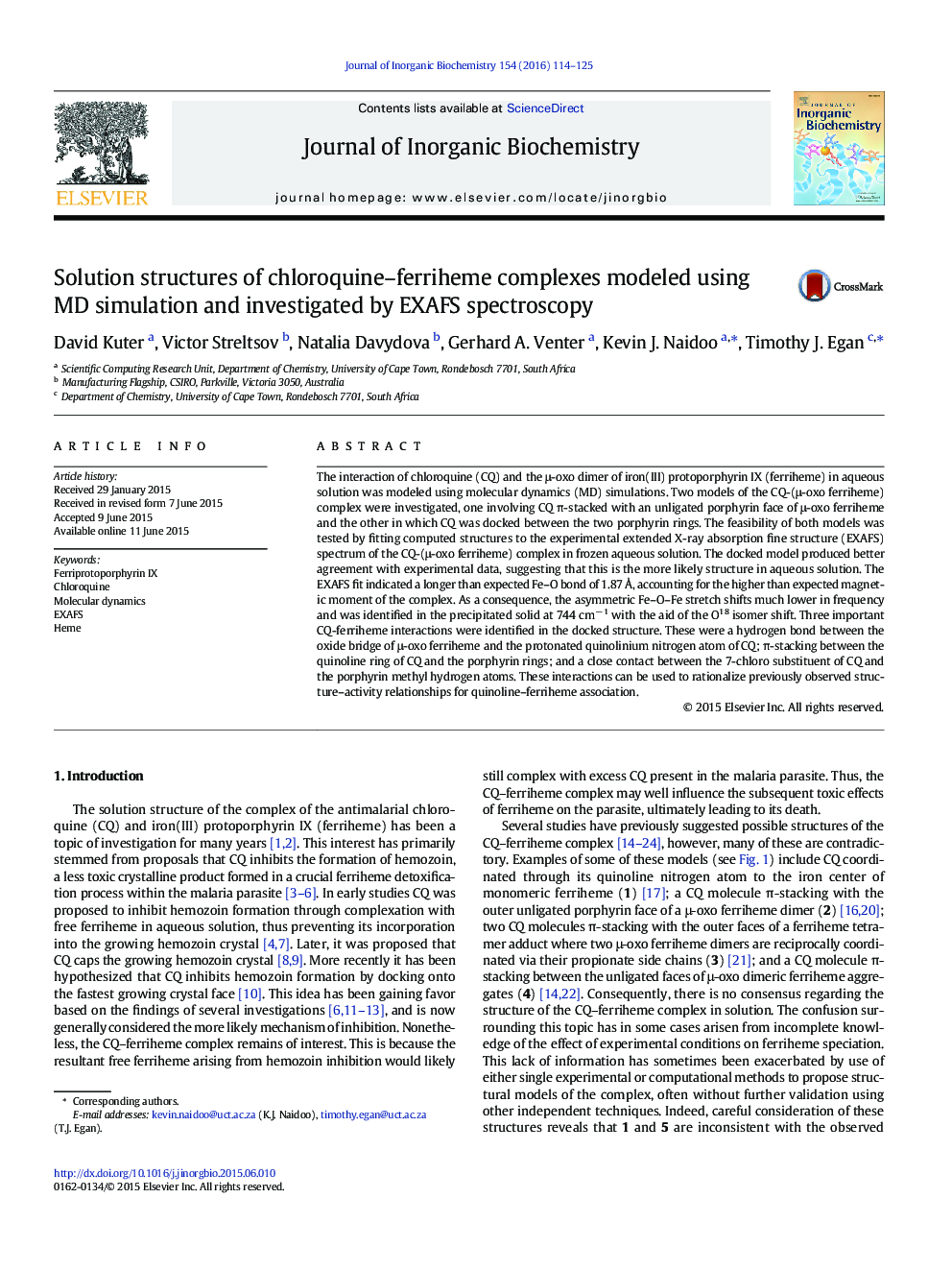| کد مقاله | کد نشریه | سال انتشار | مقاله انگلیسی | نسخه تمام متن |
|---|---|---|---|---|
| 1316495 | 1499433 | 2016 | 12 صفحه PDF | دانلود رایگان |

• Two CQ–ferriheme complexes were modeled in aqueous solution using MD simulation.
• Only one MD structure could fit the experimental EXAFS spectrum of the complex.
• The asymmetric Fe–O–Fe IR stretch was identified in the complex.
• Structural features could explain trends in reported ferriheme binding constants.
The interaction of chloroquine (CQ) and the μ-oxo dimer of iron(III) protoporphyrin IX (ferriheme) in aqueous solution was modeled using molecular dynamics (MD) simulations. Two models of the CQ-(μ-oxo ferriheme) complex were investigated, one involving CQ π-stacked with an unligated porphyrin face of μ-oxo ferriheme and the other in which CQ was docked between the two porphyrin rings. The feasibility of both models was tested by fitting computed structures to the experimental extended X-ray absorption fine structure (EXAFS) spectrum of the CQ-(μ-oxo ferriheme) complex in frozen aqueous solution. The docked model produced better agreement with experimental data, suggesting that this is the more likely structure in aqueous solution. The EXAFS fit indicated a longer than expected Fe–O bond of 1.87 Å, accounting for the higher than expected magnetic moment of the complex. As a consequence, the asymmetric Fe–O–Fe stretch shifts much lower in frequency and was identified in the precipitated solid at 744 cm− 1 with the aid of the O18 isomer shift. Three important CQ-ferriheme interactions were identified in the docked structure. These were a hydrogen bond between the oxide bridge of μ-oxo ferriheme and the protonated quinolinium nitrogen atom of CQ; π-stacking between the quinoline ring of CQ and the porphyrin rings; and a close contact between the 7-chloro substituent of CQ and the porphyrin methyl hydrogen atoms. These interactions can be used to rationalize previously observed structure–activity relationships for quinoline–ferriheme association.
The combined use of molecular dynamics simulations and EXAFS spectroscopy has led to the proposal of a new structure for the chloroquine–ferriheme complex suggested to exist in aqueous solution. Key features of this structure can rationalize previously reported trends in ferriheme association constants.Figure optionsDownload as PowerPoint slide
Journal: Journal of Inorganic Biochemistry - Volume 154, January 2016, Pages 114–125